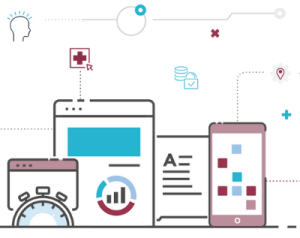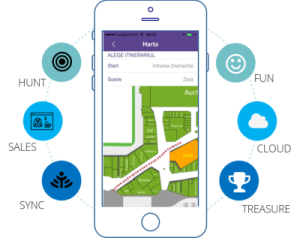Application programming interfaces (APIs) play an important role in modern applications, in the operations that organizations conduct regularly such as importing or exporting data between different applications.
WHY IS IT IMPORTANT TO DEFINE KPIs IN THE FIRST PLACE?
Key performance indicators (KPIs) for APIs are defined based on the business strategy of the organization. If these KPIs for APIs are properly defined and measured, their performance is most likely to improve.
Defining, setting, and monitoring KPIs provide a consistent framework for the performance of the APIs used. KPIs are interpreted by the various stakeholders within the organization: IT directors, developers and program managers. This gives stakeholders in each group the opportunity to understand how APIs work in the areas that are most important to their roles and responsibilities.
KPIs HAVE A DIFFERENT VALUE FOR EVERY ROLE
In most cases, the product manager selects the KPIs. Beneficiaries can be either internal or external resources to the organization, depending on the API’s developer: the API can be developed in-house, a public API (such as services provided by public entities), or a private API.
Each role interprets these KPIs differently. IT executives typically evaluate APIs by their potential to bring speed and quality to digital processes for end users and customers. They are also interested in the ability of an API to optimize operational costs or open up new interconnection possibilities. Sometimes there is the possibility to create new products by exposing the in-house APIs in a product that external partners can market.
Software developers process and create APIs directly. Important KPIs for them are related to the performance offered, including latency and error rates. It’s also important to know how many other developers use an API, how long it takes to complete an API query, and how many requests an API can respond to at a given time.
Program managers are also interested in API KPIs. They are usually responsible for an area of the organization that serves end users (internal or external) by providing access to a number of digital applications and experiences. They want to know which APIs are most used by customers, if the APIs contribute positively to the digital experience offered to end users and customers, as well as the time needed to launch new features.
KPIs USED TO MEASURE API PERFORMANCE
KPIs that measure latency are probably the most important metrics examined by developers.
The location of the APIs can affect the latency as a whole but also the total time of API calls. That is why, it is important to measure the times for TCP connections, DNS dialing, server processing and latency of the Internet connection.
Developers also focus on the following parameters:
➡ Measured pass rate // assesses the effective success rate measured for an API call in a specific location.
➡ Effective pass rate // identifies events and performance issues that cause blockages, latencies, and other issues that affect end users.
➡ Effective error rate // determines the percentage of API calls that fail, which is often caused by code errors and latency.
HOW TO MEASURE THE IMPACT OF APIs ON DEVELOPMENT
IT executives and managers use completely different sets of KPIs. The most commonly used are:
➡ Speed to API // the ability to quickly implement APIs and time to market for new features.
➡ Speed to onboard // indicates how fast API creators can register their applications, get access keys, access the dashboard.
➡ Speed to upgrade // indicates how quickly developers can access upgrade options, gain access to more data and features.
➡ Number of APIs // the number of APIs available to developers; yet what is more important is their ease of use and relevance.
➡ Number of developers // the number of developers using APIs distinguishes between general adoption and the adoption by a limited number of developers using APIs in certain contexts.
➡ Number of applications // the number of accessible applications reflect both their popularity and utility.
➡ Traffic growth // increased traffic indicates the use of API’s but also the need for improvement or expansion.
➡ Direct revenue // measures how much revenue an API generates in the sales process.
HOW APIs MAKE MONEY FOR YOU
It is important to determine which KPIs to use for your scenario, to align with the way APIs bring added value in your organization. It is recommended that you do not focus on the number of APIs or API calls because it may look impressive, but it doesn’t always correlate with the value of the business.
Instead, developers will likely focus on managing KPIs like latency, “Effective error rate” or “Effective pass rate”, while IT managers and program managers will focus on higher level KPIs.
If your goal is to generate revenue from APIs then the above should be dominant. If you want to raise awareness, then the number of developers, customers and partners will be important KPIs.
The automatic generation and monitoring of these KPIs bring benefits and greatly facilitate the analysis work. Monitoring can be performed daily, weekly, or monthly depending on the volume and frequency with which you want to manage KPIs. Setting goals about what you want to achieve from the APIs you use helps in the analysis and decision-making processes in terms of improvements that need to be made to the entire API ecosystem.
APIs are a vital component of the products we build at ROPARDO. Whether you use existing APIs or have or plan an API development strategy, we can assist you in your product development efforts.
Contact an API expert today
Or, first you can take a look at some API development samples:

One Platform for All Your Health Apps

for Treasure Hunt Game
